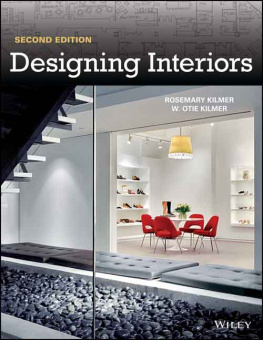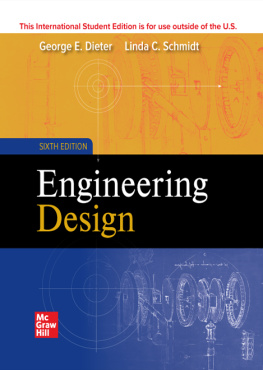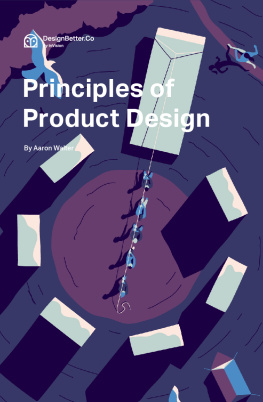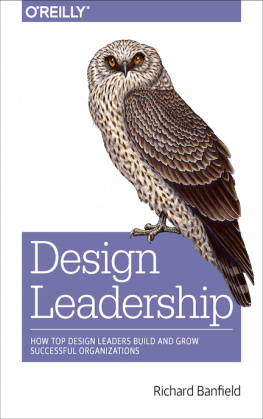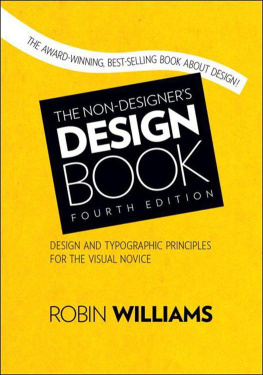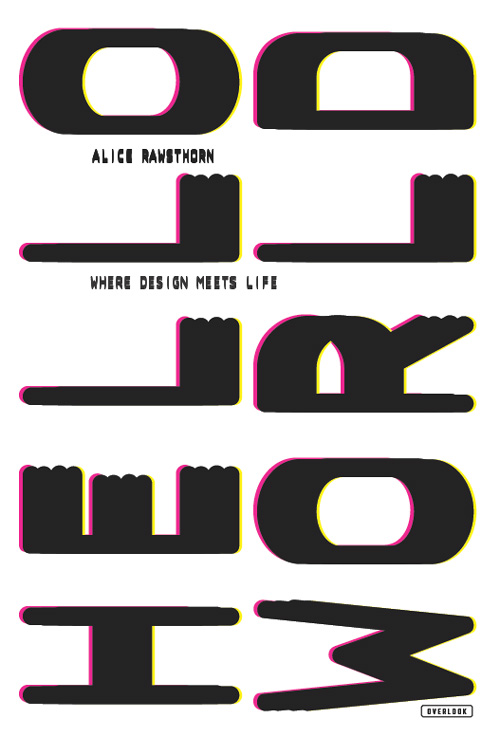The Overlook Press, Peter Mayer Publishers, Inc.
For bulk and special sales, please contact , or write us at the above address.
All rights reserved. No part of this publication may be reproduced or transmitted in any form or by any means, electronic or mechanical, including photocopy, recording, or any information storage and retrieval system now known or to be invented, without permission in writing from the publisher, except by a reviewer who wishes to quote brief passages in connection with a review written for inclusion in a magazine, newspaper, or broadcast.
Making the worlds resources serve one hundred per cent of an exploding population can only be accomplished by a boldly accelerated design revolution to increase the present performance per unit of invested resources. This is a task for radical technical innovators, not political voodoo-men.
Richard Buckminster Fuller
Try to imagine that you have never seen a smartphone before. It does not matter what make or model it is; if you came across one for the first time, how could you possibly guess what it was intended to do? Looking at it would not help, because you would not find the slightest hint in that tiny sliver of glass, metal and plastic as to what it is for, or how you might use it.
Would you expect something slimmer than a cigarette packet and not much taller or wider to be more powerful than a bulldozer? No. And would there be anything in its appearance to suggest that it could fulfil the functions of a telephone, camera, Internet browser, digital home management system, games console, DVD player, sound system, watch, clock, diary, address book, barometer, calculator, satellite navigation system, compass and countless other objects too? No again. To anyone who was not already familiar with it, a tiny digital device like a smartphone would seem utterly inscrutable.
The reason why so much computing power can be compressed into so little space is because generations of scientists strove first to invent the transistor, as a means of storing data, and then to make it smaller. So successful were they that several million transistors can now be squeezed on to a tiny microchip, which would have contained no more than a handful when it was introduced in the late 1950s. That is why even the smallest smartphone packs more processing power than an enormous bulldozer engine. It is a remarkable achievement, which demanded courage, vision, knowledge and skill from the scientists involved, but their work may never have left the laboratory and transformed the lives of millions of people, if not for design.
When people talk about the design of a phone, or of most other objects, they are usually referring to how they look, but that is only a fraction of what it will have contributed. It is thanks to the process of analysis, visualization, planning and execution, which we call design, that breakthroughs in scientific research are translated into products, like smartphones, that can make our lives easier and more enjoyable. And it is thanks to the designers who developed the software with which we operate those devices that we can instruct them to perform so many different tasks: waking us up on time; scouring the Internet for information; sending messages to people thousands of miles away; playing music or movies; unlocking the doors of cars or hotel rooms; or, possibly, replenishing the contents of the fridge when we are miles away from home.
If the phones operating software has been designed intelligently, you should be able to effect all those things effortlessly, because you will know instinctively what to do and when to do it, without ever having to dwell on it. The visual clues that appear on the screen will tell you which symbols to touch, or keys to stroke. But if its design has been botched, the process will be flawed. At best, you will not be able to operate the phone without a struggle. At worst, it will refuse to function, at least not in the way you want it to. In any event, you will feel grumpy, frustrated, possibly furious, and may very well end up blaming yourself for being incompetent, even if it is the designers fault that you cannot use the phone properly, not yours.
Then there are the possible consequences of its design deficiencies. You may find yourself waking up late because you could not work out how to set the alarm correctly. Missing an important meeting after failing to retrieve a voicemail on time. Stranding an elderly relative in a dangerous place having missed an email. Or hauling heavy luggage up to a hotel room only to discover that your phone cannot unlock the door after all. Those are just a few of the problems and mishaps that could have been avoided if only the phone had been more thoughtfully designed.
Design can empower or disempower us in every other aspect of our lives. Can you find the information you need from a website quickly and easily, or are you baffled by it? Has a signage system guided you deftly and safely from place to place, or left you feeling bewildered? Are you comfortable with the ethical and environmental implications of the things you buy, or anxious about the consequences? Do those new shoes make you feel strong, confident and gorgeous, or silly and unstable with aching ligaments and swollen ankles? And when you last bought a car, did you choose it because you loved it, or because it was the model you disliked the least? Not that it seems fair to complain about uncomfortable shoes or befuddling phones when so many people are struggling to get by on so little, but that litany of problems illustrates designs power to influence our lives for better and for worse.
When design is deployed wisely, it can bring us pleasure, choice, strength, beauty, comfort, decency, sensitivity, compassion, integrity, ambition, security, prosperity, diversity, camaraderie and so much more. But if its power is abused, the outcome can be wasteful, confusing, humiliating, scary, enraging, even dangerous. And none of us can avoid being affected by design, because it is a ubiquitous element of our world that can determine how we feel, what we do and how we look, often without our noticing. We are able to decide whether or not to engage with many other aspects of daily life: art, literature, theatre, cinema, fashion, sport and music. To some of us, they are irresistible sources of pleasure, while others may find them no more than mildly interesting, or irredeemably dull. Thankfully, we are free to choose the degree to which we will be exposed to each of them. A lot? A little? Not at all? But we cannot escape design, however much we might wish to. All we can do is to try to determine whether its impact on us will be positive or negative, and to do so successfully, we need to understand it, the more thoroughly the better.
This book explores designs influence on our lives now, and in the future. It is called Hello World partly as a reference to the first words that flash on to a computer screen whenever a new programming language has been designed successfully. Once a programmer has finished work on a language, like the one that determines how you use your phone, it is customary to test it by running a basic program, on the grounds that if that does not work, nothing will. Most programmers use the same test program, one developed at the turn of the 1970s by Dennis M. Ritchie, a research scientist at Bell Laboratories in New Jersey, where the transistor was invented. All it does is spell out hello, world. Year after year, thousands of programmers have waited for those words to appear to reassure them that their efforts have been successful. But there is another reason for choosing



